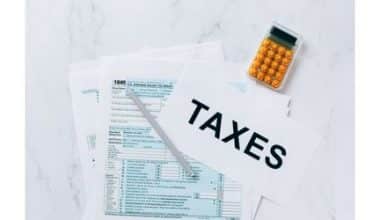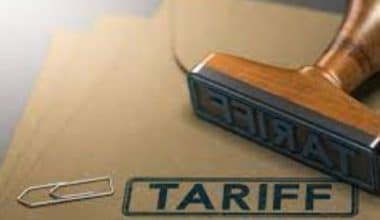The de minimis rule says that the government shouldn’t get involved when something isn’t that important. The rule can be identified in many parts of the law, and it’s a good way to make sure that small mistakes or violations won’t cause you problems. To correctly apply the de minimis rule, you must first understand what the term means. Thus, we will talk about the de minimis rule tax, benefits, the limit, and municipal bonds.
De Minimis Rule
As the name suggests, de minimis means that the law won’t care about things that don’t matter much. The de minimis criterion applies to contracts, taxes, criminal trials, and property claims.
The de minimis rule is a common part of tax law. If a person’s annual income is less than the minimum cutoff amount, they don’t have to pay income tax until they make more than the line.
Even when someone is traveling, they only have to tell border security about certain things if they have more than a certain amount of them. Anything less than the minimum can be seen as “de minimis,” which means “too small to worry about the law.” If something is so small that it doesn’t change the way the rule of law works, it’s likely to be called a “de minimis exception.”
Read Also: TAXABLE INTEREST: Meaning & How Taxable Interest Is Taxed
De Minimis Rule Tax
De minimis rule tax decides whether a discount bond is a capital gain or regular income. The guideline states that a market discount of less than a quarter-point each year between acquisition and maturity is not tax-deductible.. If you keep the bond longer than a year, the premium paid over face value becomes a capital gain. The Latin word “de minimis”, means “about minimal things.”
The de minimis tax rule states that if you purchase a municipal bond at a minimum discount, it is subject to capital gains tax rather than the (typically higher) regular income tax rate.
The Internal Revenue Service (IRS) says that a minimal discount, which is less than a quarter of a percent of the bond’s par value times the number of full years between when the bond was bought and when it matures, is insufficiently small to be regarded as a market discount for income tax purposes.
The de minimis tax rule says that a price is too small if it is less than 0.25 percent per year between the time you purchase and when it matures.
Capital Gains Tax vs. Ordinary Income Tax
Capital Gains Tax (CGT): The capital gains tax is a type of tax that is paid when a profit is made from the sale of non-inventory assets, such as bonds and land. In the U.S., assets bought and sold within a year are taxed at the same rate as regular income and more strongly than long-term capital gains.
Ordinary Income Tax: An ordinary income tax is a type of tax that is levied on a number of items such as salaries, wages, commissions, and so on. Aside from the basic types of income, ordinary income tax may be in dividends, partnerships, fees, and even gambling wins.
How to Determine Which Form of Tax Is Paid
- Using the “de minimis” rule, the steps below show how to figure out if a bond is subject to capital gains tax or regular income tax.
- Multiply the bond’s face value (its release price) by 0.25%.
- Multiply the aforementioned result by the number of full years between the date you purchased the discounted bond and its maturity.
- Take the answer at face value. It will decide the minimis level. The buying price and de minimis threshold are both in the diagram below as factors that affect taxation.
Read Also: PASSIVE INCOME: Definition, Types & Ideas in 2023
De Minimis Rule Municipal Bonds
Most buyers already know what the main benefits of the De Minimis Rule municipal bonds are. The main benefit is a steady, predictable income that is usually exempt from federal income tax and, in some cases, state and local income tax as well, depending on whether you live in the state where they issue bonds or not.
But investors in local bonds might not know that discounted bonds can come with a tax bill. Even though income from local securities may not be taxable, price gains on bonds on the secondary market at a discount are generally taxable. The de minimis rule says that a city bond redemption may be a capital gain instead of just regular income, which affects how this tax applies.
How original issue discount (OID) municipality bonds apply doesn’t change because of de minimis. “OID” stands for a discount from the bond’s face value when it was first released. The original issue discount is not taxed because the difference between the discount price and the value when the bond matures is interest, which is not taxed. But if an OID municipal bond is bought on the secondary market at a discount, the discount amount is usually taxed as ordinary income when the bond is sold or redeemed, just like when other tax-free stocks are sold.
De Minimis Limit
You can be fully taxable in any tax period or longer period if the total value of your free input tax is not more than:
- On average, £625 per month
- Half of the total amount of input tax you paid during the period
The value of exempt input tax includes both the part that gets straight to exempt suppliers and the part that reaches exempt supplies even after other reductions have been put together. Total
‘Total Input Tax” excludes taxes that cannot be recouped, such as VAT on corporate entertainment costs, which is “blocked.” “On average” means the average over the tax term or a longer period of time.
#1. If Your Exempt Input Tax Is Below the de Minimis Limits
Normally, you can’t claim any of your exempt input tax. However, if your exempt input tax is less than the de minimis limit, you can instead recover it. If you register for VAT as a group, the cap applies to the whole group.
#2. Items That You Should Include or Exclude
Any input tax that is owed to you or that is owed to another person should not be included in calculating the de minimis limit or your annual adjustment under the CGS (paragraph 13.18). (section 12).
#3. When to Apply the de Minimis Limit
If you are not using the “annual test” (see line 11.11), you must check every time you fill out your VAT Return to see if your exempt input tax is more than the “de minimis” limit.
When you do your yearly adjustment (section 12), you will need to think about the de minimis limit again. When you figure out your yearly adjustment, you will need to include all of the exempt input tax you paid during the tax year, even if you were able to get it back under the de minimis rule.
Read Also: MUNICIPAL BONDS: Definition, Rates, How to Buy & Difference
De Minimis Benefits
Your employees can get de minimis fringe benefits, which are tax-free. The IRS says that de minimis fringe benefits are so small and rare that it is unreasonable and impossible to keep track of them.
A “regular” fringe benefit is any extra money an employer gives to an employee in exchange for work that isn’t part of their pay. Many extra benefits, except those that are considered “de minimis,” are taxable.
The IRS has already decided that things worth more than $100 do not count as “de minimis” benefits.
Examples of de Minimis Fringe Benefits
So, what are de minimis benefits and costs? Here are some examples of de minimis extra benefits:
- Occasionally, use a photocopier
- Snacks, coffee, donuts, etc.
- Some holiday presents (for example, holiday ham)
- occasional lunch expenses or transportation costs associated with working additional hours
- Group term life insurance for an employee’s partner or dependents with a face value of no more than $2,000
- Flowers, food, books, and so on.
- Personal usage of an employer-provided cell phone for mostly business purposes
- Low-cost gifts for workers’ birthdays and work anniversaries
- Merchandise and swag from the company, like shirts.
- Staff gatherings, such as lunches and small parties
- Remember that if a perk or cost is worth more than $100, you can’t call it a “de minimis” benefit, so it is taxable.
When deciding if something is a de minimis extra benefit, you should look at two things:
its value
- How often do you give it to an employee?
- De minimis benefits are those that are worth less than $100 and are only given sometimes.
De Minimis Benefits in Action
Let’s look at an example of a de minimis employee perk in action to learn more about it.
On Ritzy’s birthday, you give her a fruit gift. Jacob also has an anniversary at work, so you give him a gift card. Both are worth $50, which is the same amount. Only Ritzy’s fruit basket is a “de minimis” bonus.
This is why: Ritzy’s fruit box doesn’t happen very often and costs less than $100. Even though Jacob only gets gift cards on rare occasions, they are the same as cash and need to be documented on Form W-2.
Advantages of Giving de Minimis Extra Benefits
Why would a company want to give de minimis benefits to employees? Here are some of the reasons:
- Tax-free: Due to their low face value and infrequency, true de minimis perks are tax-free for both the worker and the employer.
- Tax-deductible: Are de minimis extra benefits deductible? They are, yes. This means that your company can count any funds you spend on de minimis fringe perks as an expense, which will lower your tax bill at the end of the year.
- Boosts employee morale: Special perks like parties, snacks, and fruit baskets can go a long way toward keeping workers happy.
What Are the de Minimis Limits?
The de minimis rule is a cap that HMRC set to allow small businesses to recover some of the tax they paid on items that weren’t subject to tax because they were exempt. This may allow partly free enterprises to recover more of their purchase taxes.
What Is the de Minimis Rule of 10%?
The 10% de minimis rate can only be used to cover overhead costs that aren’t directly charged to government awards. If all costs, like rent, utilities, and administrative costs, are charged straight to the federal award, then the recipient shouldn’t also charge the 10% de minimis rate.
What Does the De Minimis Value Mean?
The Latin saying “de minimis non-curat lex” means “the law doesn’t care about small things.” A de minimis value in overseas trade is so minimal that it’s not taxable or subject to duty.
What Is the Meaning of de Minimis State?
The Regulation applies to minor sums of aid (“de minimis”) within a preset threshold that do not qualify as State aid under Article 107(1) and is thus excluded from the competition rules’ notification requirements.
What Is Minimum Value in Customs?
Minimum Value: The minimum value is a limit for figuring out how much customs will charge. It protects against under-billing, over-billing, or avoiding duty. Furthermore, the majority of the disagreements between customs authorities and enterprises arose from the determination of those products.
What Is a de Minimis Shipment?
A country establishes a minimum value for foreign products to apply customs charges and taxes. Did you know? They don’t charge all shippment when they come in. In many countries, there is a de minimis threshold that tells how much a shipment can be worth before it has to pay any customs fees or taxes.
What Is Rule 13 of the Customs?
If any imported goods are stolen after they have been unloaded but before the right officer has given an order for clearance for home use or deposit in a warehouse, the importer won’t have to pay the duty on those goods unless they are returned to the importer.






